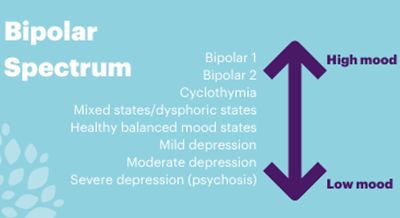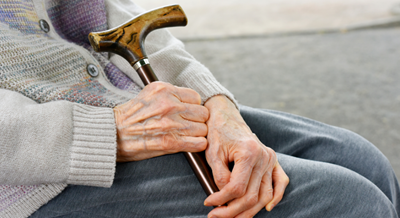This is an abridged version of a fully referenced academic article. For a copy of the article with its full references, please email communications@stpatsmail.com.
How COVID-19 has affected mental health
Since the beginning of the COVID-19 pandemic, there has been a lot of concern about the mental health impact it has had. The full impact of the pandemic, which had such an abrupt onset as well as the restrictions imposed to contain the virus, on the mental health of adolescents is still evolving. Adolescence is a time when mental health difficulties emerge for many, and coupled with the disruptions to accessing services during the lockdowns may have increased the unmet need of adolescents’ mental health difficulties.
There is a lot of stress and fear about the COVID-19 virus and many are feeling vulnerable to the fear of contagion and for some, the life-threatening nature of the illness.
The burden of social isolation has increased mental health difficulties. Stressful life events like COVID-19 are known to be strong negative environmental factors that can predispose individuals to mental health problems. It was found that disease outbreaks, including the Ebola virus disease and Swine flu, were linked with a high prevalence of symptoms of psychological disorders.
Studies have shown that:
- individuals with anxiety disorders reported significantly higher scores on COVID-19 stress scales compared to individuals with mood disorders
- there were reports of concerns that anxiety and depression levels increased during the pandemic
- there was an increase in anxiety and depression linked with the stress of the risks of COVID-19 in young people, and also in parents.
The time of adolescence
Adolescence is an important period when young people develop their self-concept and their identity, and is linked with the onset of many mental health difficulties. Adolescents rely heavily on friendships and peer interactions are highly valued. Experiencing stress during this time can make adolescents more vulnerable to developing mental health difficulties.
During the various lockdowns, adolescents’ social infrastructure was removed and many became more aware of high levels of stress and anxiety in their parents and adults around them.
Anxiety in adolescents
Anxiety disorders were the most commonly reported mental health difficulty in adolescence before the pandemic.
Almost one in three adolescents between the ages of 13 to 18 years will experience an anxiety disorder.
The diagnosis of an anxiety disorder implies that the fear or anxiety must be out of proportion to the situations. The three most common types of anxiety disorders presenting in primary care are: generalised anxiety disorder; separation anxiety disorder; and social anxiety disorder.
Only about 40% of children with an anxiety disorder receive treatment.
Often there is a delay between the start of symptoms of anxiety before the first treatment. This may be even longer now as many health services were disrupted.
-
Generalised anxiety disorder
Generalised anxiety is characterised by almost daily worry that interferes with daily activities. There is often worry about how they are perceived by friends, and sometimes adolescents worry excessively about the wellbeing of family members. The worry must be excessive and last more than six months and cause distress or impairment in functioning in school or at home to get a diagnosis. It is usually accompanied by physical symptoms.
The element of fear associated with COVID-19, as well as the uncertainty of how COVID-19 may affect themselves, their families or friends, has been a major trigger for generalised anxiety. For adolescents with pre-existing anxiety, knowing what is likely to happen on a day-to-day basis can reduce anxiety. The pandemic and lockdown restrictions hugely disrupted the usual home, school and social routines. If there is too much uncertainty or a threatening environment, this can cause an increase in anxiety symptoms. The uncertainty about the progression of the virus, the mutations of the virus as well as worry about the future can greatly escalate underlying anxiety and worry to the level that the individual is unable to carry out their usual daily activities.
-
Separation anxiety disorder
Separation anxiety occurs when an adolescent is excessively fearful or anxious about separating from those to whom they feel attached. Symptoms need to be present for four weeks or more. COVID-19 escalated these fears as some adolescents became more worried when their parents or loved ones left the house for fear they would get the virus, or if they had a family member that required hospitalisation this would greatly increase their worry that their loved one may die and never come home.
-
Social anxiety disorder
Social anxiety disorder often presents with an adolescent being anxious about embarrassment or humiliation in social interactions, potentially leading to the adolescent avoiding certain social situations.
The symptoms need to be ongoing for more than six months to have a diagnosis. Due to the restrictions and reducing in-person contact, many adolescents that had a pre-existing social phobia were relieved not to have to leave the house. This then lead to major difficulties, however, when they had to return to school after being in lockdown as they had become so comfortable being in their own environment and not needing to interact in the classroom or speak up in front of peers. It is well known that allowing an adolescent to avoid situations that are anxiety-provoking only serves to reinforce. This avoidance then confirms their self-perception of being unable to cope and feeds into a sense of helplessness.
Aetiology of anxiety
Children who have a less secure attachment with their primary caregiver are at increased risk of developing anxiety disorders.
Prior to the pandemic, children with parents who have anxiety disorders are seven times more likely to be diagnosed with an anxiety disorder.
With a lot of their social infrastructure removed, some adolescents were more vulnerable when they were then exposed to the high levels of stress and anxiety of the adults around them.
Stressful situations can trigger psychological distress. However, some adolescents are very resilient and not all develop mental health difficulties when they are under stress. Some protective factors against developing mental health difficulties include in-person social interaction; good friendships; and school support. These protective factors decreased during the pandemic.
Family relationships played a particularly important role in the adjustment of adolescents during the pandemic. Positive relationships with parents were associated with better adjustment during the pandemic, and paternal attachment insecurity strengthened the increase in loneliness during the pandemic.
Parents’ own concerns about the implications of COVID-19 may have affected their ability to recognise and respond to their child’s anxiety. For some parents, working at home suited them as the stress of the work environment and their commute had been removed and they benefited from having more time for family. This may have helped their child’s resilience and their connection with them.
Adolescents from more disadvantaged and lower-income environments experienced a more negative impact of the pandemic as they experienced the loss of family income; higher rates of illness; and death among community members, as well as problems in virtual connectivity.
Sleep is vital for wellbeing and the potential for sleep problems to develop during the pandemic is high. Poor sleep habits can cause anxiety, and anxiety itself can also cause poor sleep. Many adolescents had sleep difficulties exacerbated during lockdown.
Adolescents who had being experiencing bullying or who were struggling academically in school were relieved to be at home and had reduced stress at bedtime. They had less ruminating and may have been more relaxed at bedtime than when they were in school. Studies have shown a reduction in self-reported internalising problems and anxiety symptoms during the first six months of the pandemic.
Social interactions online
Adolescents reported an increase in their use of social media during the pandemic. Internalising problems before the pandemic was also found to be predictive of less friend support during the pandemic, suggesting that it is easier for adolescents with higher levels of adjustment to maintain their friendships when this is challenged.
-
Key findings
- Adolescents often prioritise friendships and social contacts, and their peer interactions play an important role in their development
- Many adolescents felt lonelier during the pandemic
- Adolescents with higher levels of loneliness reported fewer virtual and face-to-face social connections
- Adolescents with fewer social connections were less willing to help lonely peers the actual duration of loneliness was a predictor of increased mental health problems
- More negative online experiences were related to more loneliness for other young people.
Online experiences might reduce loneliness for some during physical isolation, as more positive online experiences were related to less loneliness.
Telehealth: Technology-delivered treatments
With the pandemic disrupting the delivery of all healthcare, the World Health Organization has encouraged professional providers to use digital interventions to support patients with mental health difficulties. Telehealth can reduce geographical barriers and may have the potential to lower the barriers to seeking treatment for young people.
Telehealth seems to be very successful for providing care for adolescents with anxiety. Many are often very comfortable engaging online as they prefer to be in their own environment, and they do not have to cope with any extra stress of going for an appointment. They may have anxiety about being seen by others in the clinic, while others may worry that they could contract COVID-19. For some, wearing a face covering can be a barrier when communicating and engaging in the appointment. There is less disruption to the frequency of the appointments when they are online as it reduces the need to cancel an appointment if the service user or if the clinician is self-isolating. It reduces the amount of time for adolescents to miss school and parents to take time off work to be able to attend the appointments.
Some adolescents are not happy to engage remotely and would prefer an in-person appointment, and for these adolescents many have found telehealth a barrier for them engaging with mental healthcare. There is a disadvantage for those that don’t have access to technology and then cannot avail of online treatment.
The option of a virtual admission (Homecare Service) was developed in SPMHS for adolescents and adults that require more intensive input than can be delivered by day or outpatient service. Service users can have a tailored mental health service which, in essence, is the inpatient multidisciplinary team working with the adolescent remotely. This is very useful for adolescents with separation anxiety disorder that may not be able to leave home. It allows ongoing integration where possible with the adolescent attending some classes in their own school and if possible remaining engaged in some extracurricular activities when these are available. There is still also the option of physical admission to the inpatient unit for those that clinically need it or those that prefer admission to hospital.
Pandemic uncertainty
The impact of COVID-19 on anxiety disorders in adolescents has been very diverse. Some adolescents managed much better than expected. The reasons for this involve multiple protective factors involving child, family and broader community factors, including educational support and engagement from schools. Studies suggest that greater perceived severity of the virus is associated with poorer mental health outcomes.
The fact that the pandemic is ongoing, and there remains so much uncertainty about how much it will continue to affect society, is a trigger for ongoing stress and anxiety. Chronic stress and is a well-established catalyst for mental health difficulties.
The element of fear associated with COVID-19 is likely to be a major factor in the increase in symptoms of anxiety. There has been extensive media coverage about the virus and updates about the number that contract it each day, and the number whom have died from it. The updates about the numbers in hospital and in the intensive care units are necessary to help the public understand the importance of adhering to public health guidelines, but for those with underlying anxiety difficulties, they may lead to more over-worrying and overthinking, often escalating mental health difficulties.
Continue to…
Research Ethics Committee seeking GP





